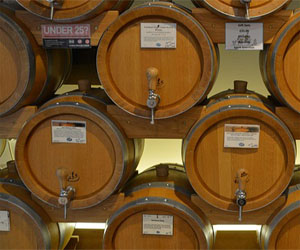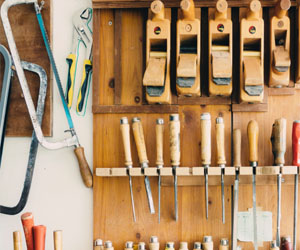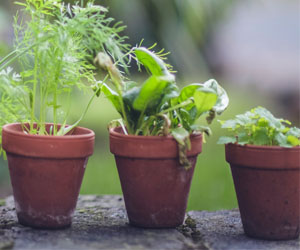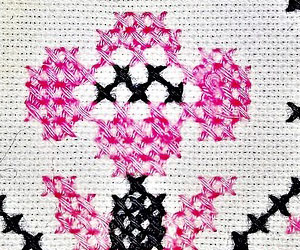


A Journey Of Craftsmanship And Creativity

Woodworking, often perceived as a complex and intimidating craft, becomes much more accessible when you start with the fundamentals. The world of woodworking is rich and diverse, but it all begins with mastering the basics. Whether you're a newcomer eager to explore the craft or someone looking to refresh their knowledge, understanding the core principles of woodworking is the first step on a rewarding journey of craftsmanship and creativity.
1. Safety First: Before you even touch a piece of wood, familiarize yourself with safety practices. Always wear the appropriate safety gear, such as safety glasses, ear protection, and dust masks. Understand how to use your tools safely and learn about the potential risks associated with woodworking.
2. Know Your Tools: Tools are the lifeblood of woodworking, and learning how to use them is essential. Start with the basics, including hand tools like chisels, planes, saws, and measuring tools. Gradually, you can explore power tools like routers, table saws, and band saws. Understanding the function and operation of each tool is crucial for safe and efficient woodworking.
3. Wood Selection: Choosing the right wood is a fundamental step. Different woods have varying characteristics, such as hardness, grain pattern, and color. As a beginner, it's wise to begin with softwoods like pine or cedar due to their ease of workability. Once you gain experience, you can move on to hardwoods like oak, maple, and cherry.
4. Measuring And Marking: Accurate measurements and precise markings are the backbone of woodworking. Learn to use measuring tools, such as tape measures, squares, and calipers. Understand the significance of measuring twice and cutting once, as even minor measurement errors can affect the outcome of your project.
5. Wood Joinery: Wood joinery refers to the methods used to connect pieces of wood together. Basic joint types like butt joints, lap joints, and dowel joints are a good place to start. As you advance, explore more complex joints such as mortise and tenon, dovetail, and finger joints. Proper joinery is essential for strong, stable, and aesthetically pleasing woodworking projects.
6. Finishing Techniques: The finishing touches can make or break a woodworking project. Learn about the various finishing techniques, including sanding, staining, and applying protective coatings like varnish or polyurethane. Proper finishing not only enhances the appearance of your work but also protects it from the elements and wear and tear.
7. Woodworking Plans: For beginners, it's often helpful to work from pre-designed woodworking plans. These plans provide step-by-step instructions, detailed drawings, and a list of necessary materials and tools. Working with plans can help you understand the construction process and build your confidence in the craft.
8. Practice And Patience: Woodworking, like any skill, requires practice and patience. Don't be discouraged by initial mistakes; they are an integral part of the learning process. Every project you undertake, no matter how simple, will contribute to your growth as a woodworker.
Woodworking basics are the foundation upon which you can build your skills and knowledge. Mastering these fundamentals provides you with the confidence and competence needed to tackle more complex projects and explore the limitless possibilities that woodworking offers. The journey of craftsmanship and creativity begins with the basics, but it has no bounds, and your growth as a woodworker is limited only by your dedication and willingness to learn.
A Sustainable Lifestyle For A Better Future
 Reduce, Reuse, Recycle: This timeless mantra forms the foundation of green living. Reducing consumption, reusing items when possible, and recycling materials are essential steps in minimizing waste.
Reduce, Reuse, Recycle: This timeless mantra forms the foundation of green living. Reducing consumption, reusing items when possible, and recycling materials are essential steps in minimizing waste.
Energy Efficiency: Green living encourages energy-conscious choices such as using energy-efficient appliances, properly insulating homes, and turning off lights and electronics when not in use.
Sustainable Transportation: Opting for eco-friendly modes of transportation, such as biking, walking, carpooling, or using public transit, reduces carbon emissions associated with personal vehicles.
Sustainable Food Choices: Adopting a diet rich in locally sourced, organic, and plant-based foods can reduce the carbon footprint associated with food production and distribution.
Water Conservation: Conserving water through practices like fixing leaks, using low-flow fixtures, and reducing water waste is a fundamental aspect of green living.
Minimalism: Embracing minimalism involves living with fewer possessions, which not only reduces consumption but also fosters a simpler, more sustainable lifestyle.
Benefits Of Green Living
Reduced Environmental Impact: Green living minimizes resource consumption, lowers carbon emissions, and reduces waste, thus mitigating harm to the environment.
Cost Savings: Energy-efficient practices, reduced consumption, and sustainable choices often lead to financial savings over time.
Healthier Lifestyle: Sustainable food choices, reduced exposure to harmful chemicals, and increased physical activity associated with green living can lead to better physical and mental health.
Creative Candle Making Ideas
 Flower-Embedded Candles: Press dried flowers or herbs between sheets of wax to create stunning, botanical candles. Whether you choose vibrant petals or aromatic herbs, these candles bring a touch of nature into your home.
Flower-Embedded Candles: Press dried flowers or herbs between sheets of wax to create stunning, botanical candles. Whether you choose vibrant petals or aromatic herbs, these candles bring a touch of nature into your home.
Ice Candle Art: Ice candles are a fascinating and innovative approach to candle making. Freeze wax around a pre-made mold filled with ice, and as the ice melts, it creates intriguing patterns in the candle. The end result is a truly one-of-a-kind piece.
Hidden Treasure Candles: Embed small, non-flammable objects like charms, gemstones, or small messages within your candles. As the wax melts, these hidden treasures are revealed, adding an element of surprise to your candle making.
Ombre Candles: Create a gradient effect by using different shades of the same color in a single candle. Gradually blend the colors as you pour the wax to achieve a smooth transition from one hue to the next.
Exploring Beer Ingredients
 Water may seem unassuming, but it is arguably the most critical ingredient in brewing. Its composition, mineral content, and purity greatly affect the final beer. Different regions with unique water sources contribute to distinct beer styles. For instance, the soft water of Pilsen, Czech Republic, played a pivotal role in the creation of the world-famous Pilsner lager.
Water may seem unassuming, but it is arguably the most critical ingredient in brewing. Its composition, mineral content, and purity greatly affect the final beer. Different regions with unique water sources contribute to distinct beer styles. For instance, the soft water of Pilsen, Czech Republic, played a pivotal role in the creation of the world-famous Pilsner lager.
Malt: The Heart Of The Brew
Malt, typically derived from barley but sometimes wheat, rye, or other grains, serves as the primary source of fermentable sugars in beer. It undergoes a malting process, which involves soaking, germinating, and drying the grain to convert the starches into fermentable sugars. The variety of malt used, the degree of roasting, and the kilning process determine the color, flavor, and body of the beer. Lightly roasted malts contribute to pale lagers, while deeply roasted malts produce rich, dark stouts and porters.






The Path To Healthier, Radiant Skin And Self-Confidence
 Understanding The Toxins: Non-toxic beauty advocates for the avoidance of harmful chemicals commonly found in many conventional beauty products. These chemicals, such as parabens, phthalates, formaldehyde, and artificial fragrances, have been associated with various health concerns, including allergies, hormonal disruption, and even cancer.
Understanding The Toxins: Non-toxic beauty advocates for the avoidance of harmful chemicals commonly found in many conventional beauty products. These chemicals, such as parabens, phthalates, formaldehyde, and artificial fragrances, have been associated with various health concerns, including allergies, hormonal disruption, and even cancer.
Clean Ingredients: Non-toxic beauty products are formulated with clean, safe ingredients. This means they exclude harmful chemicals and replace them with natural, organic, and plant-based alternatives. For example, clean skincare often uses ingredients like aloe vera, shea butter, and essential oils.
Sustainability Matters: Non-toxic beauty goes hand in hand with sustainability. Brands that champion non-toxic beauty often focus on eco-friendly packaging and sustainable sourcing of ingredients. By reducing their environmental footprint, they align with the principles of environmental consciousness.
Transparency And Accountability: Non-toxic beauty brands are known for their transparency. They provide clear information about the ingredients they use, their sourcing, and their production processes. This empowers consumers to make informed choices about the products they apply to their skin.
Cruelty-Free: Many non-toxic beauty brands are committed to cruelty-free practices. They don't test their products on animals, aligning with the values of ethical consumerism.
Non-Toxic Makeup: Non-toxic beauty extends beyond skincare to include makeup products. Non-toxic makeup brands provide a range of clean cosmetics, from foundation and lipstick to mascara and eyeshadow, offering a safer alternative for enhancing beauty.
Crafting A Sustainable Future
 The Essence Of Green DIY Projects
The Essence Of Green DIY Projects
Green DIY projects combine creativity with sustainability, providing a platform for you to express yourself while making environmentally responsible choices. These projects encompass a wide range of activities, from upcycling furniture and crafting eco-friendly home decor to making your own natural cleaning products or gardening with organic, homegrown produce.
Environmental Benefits
One of the most significant advantages of green DIY projects is their environmental impact. By consciously choosing sustainable materials, repurposing items, and reducing waste, these projects contribute to a greener and more eco-friendly world. They help lower the carbon footprint by diverting usable materials from landfills, conserving resources, and minimizing the environmental impact of manufacturing and transportation.
Promoting Sustainability
Green DIY projects promote sustainability in multiple ways. They encourage you to use sustainable, eco-friendly materials, such as reclaimed wood, bamboo, recycled fabrics, and non-toxic paints. By crafting your own goods, you also reduce the demand for mass-produced items, which often involve harmful chemicals, excessive packaging, and wasteful practices.
Cost-Efficiency
Many green DIY projects offer cost-efficiency. Making your own household products, for example, can save you money in the long run. Crafting your own furniture or decor can be more economical than buying new items, especially if you upcycle or repurpose materials you already have or find in thrift stores.